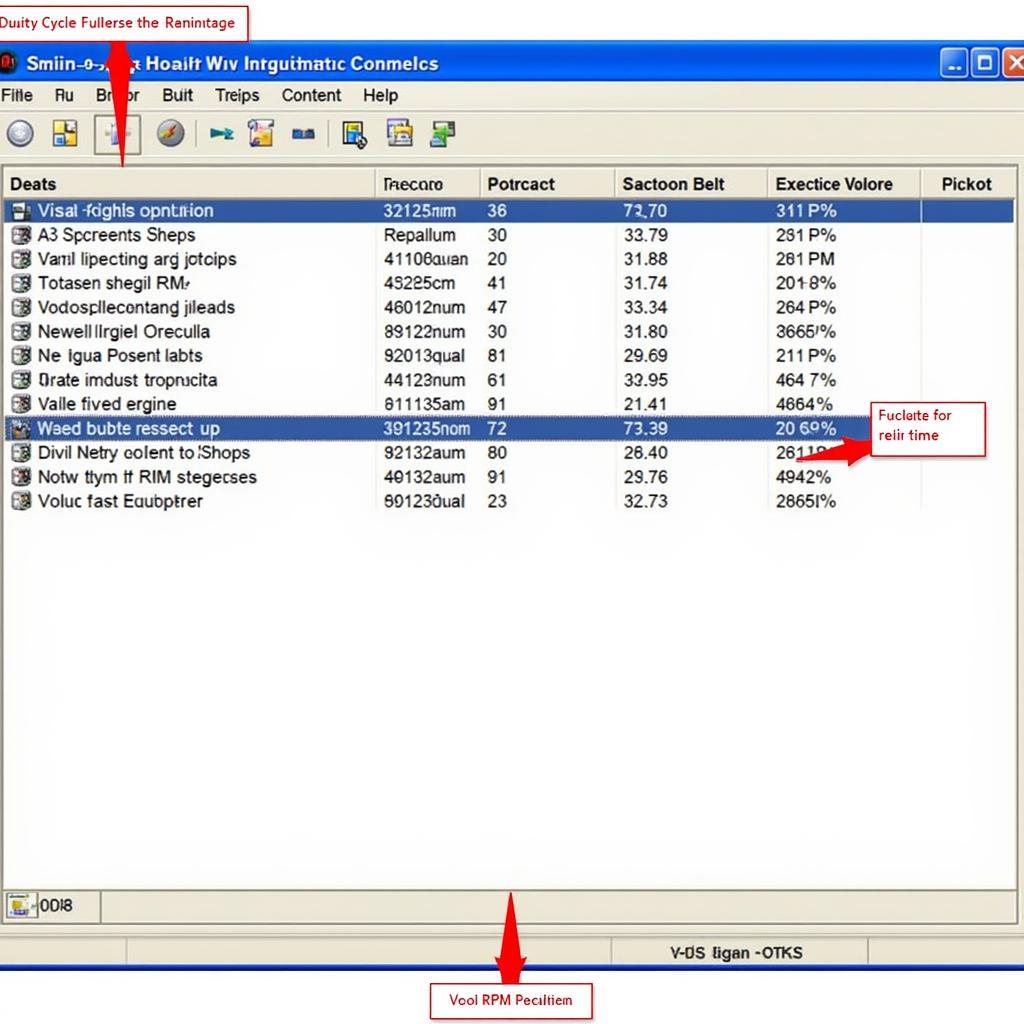Using VCDS to test your catalytic converter is a crucial step in diagnosing emissions issues. This guide will walk you through the process, explaining the intricacies of catalytic converter function, common fault codes, and how VCDS can help you pinpoint the problem. We’ll cover everything from interpreting data to understanding the limitations of the test itself.
A properly functioning catalytic converter is essential for minimizing harmful emissions. When this component fails, it can lead to decreased engine performance, failed emissions tests, and even damage to other parts of your exhaust system. If you suspect a catalytic converter issue, VCDS offers a valuable diagnostic tool. For example, you might encounter a P0299 fault code, which can be diagnosed using VCDS. You can find more information about this code at vcds p0299.
Understanding Catalytic Converter Function
The catalytic converter is a key component of your vehicle’s emissions control system. Its primary function is to convert harmful pollutants in exhaust gases into less harmful substances. This is achieved through chemical reactions facilitated by precious metals within the converter. These reactions require specific operating temperatures, and any deviation from these can impact the converter’s effectiveness.
How a Catalytic Converter Works
Exhaust gases pass through the converter’s honeycomb structure, coated with a catalyst. This catalyst facilitates the oxidation of carbon monoxide (CO) and unburnt hydrocarbons (HC) into carbon dioxide (CO2) and water (H2O). Simultaneously, it reduces nitrogen oxides (NOx) into nitrogen (N2) and oxygen (O2).
Using VCDS for Catalytic Converter Testing
VCDS allows you to monitor various parameters related to catalytic converter performance. Key data points include oxygen sensor readings before and after the converter. By comparing these readings, you can assess the converter’s efficiency. Additionally, VCDS can help identify other potential issues, such as faulty oxygen sensors or exhaust leaks, which can mimic catalytic converter problems. For a comprehensive list of measurable blocks, check out our vcds measuring block list.
Interpreting Oxygen Sensor Data
A properly functioning catalytic converter will show a significant difference in oxygen sensor readings between the upstream (before the converter) and downstream (after the converter) sensors. The upstream sensor readings will fluctuate, while the downstream sensor readings should remain relatively stable. If the downstream sensor readings mirror the upstream sensor readings, it suggests the converter is not effectively converting the exhaust gases.
Common Catalytic Converter Fault Codes
Several fault codes can indicate a problem with your catalytic converter. VCDS can help you identify these codes and pinpoint the specific issue. Some common codes related to catalytic converter issues include P0420 (Catalyst System Efficiency Below Threshold – Bank 1) and P0430 (Catalyst System Efficiency Below Threshold – Bank 2).
What do these codes mean?
These codes generally indicate that the catalytic converter is not operating efficiently enough to meet the required emissions standards. This could be due to a faulty catalytic converter, but it could also be caused by other issues, such as a faulty oxygen sensor or an exhaust leak. VCDS allows you to analyze the data and differentiate between these possibilities. You can also refer to our guide on specific VCDS codes for certain Volkswagen models like vw tiguan 5n vcds codes.
Limitations of the VCDS Catalytic Converter Test
While VCDS provides valuable insights into catalytic converter performance, it’s essential to understand its limitations. The test primarily relies on oxygen sensor data, which can be influenced by other factors. A faulty oxygen sensor, for instance, can produce readings that falsely indicate a catalytic converter problem.
What other tests can be performed?
Other diagnostic tests, such as exhaust gas analysis, may be necessary to confirm a catalytic converter issue. Visual inspection of the converter for physical damage, such as cracks or melting, can also be helpful.
“Regular maintenance and timely diagnosis are crucial for maintaining a healthy catalytic converter,” says John Miller, a seasoned automotive engineer with over 20 years of experience. “Using VCDS can save you time and money by helping you identify the root cause of emissions issues.”
Conclusion
Using VCDS to test your catalytic converter is a powerful diagnostic tool for identifying emissions problems. By understanding how to interpret the data and recognizing the limitations of the test, you can effectively pinpoint the issue and take the necessary steps to resolve it. Remember, a properly functioning catalytic converter is vital for environmental protection and optimal vehicle performance. You can learn more about testing other components using VCDS through our guide on vcds lambda test.
“Don’t underestimate the value of preventative maintenance,” adds Miller. “Regular checks can help you catch potential problems early and avoid costly repairs down the line.” For a specific example of how VCDS can help diagnose fault codes, take a look at our case study on a 2012 mk6 jetta gli vcds 01335 fault code.
FAQ
- How often should I test my catalytic converter?
- What are the signs of a failing catalytic converter?
- Can I clean my catalytic converter?
- How much does a catalytic converter replacement cost?
- What causes a catalytic converter to fail prematurely?
- Can I drive with a bad catalytic converter?
- How can I prevent catalytic converter failure?
For further assistance, please contact us via Whatsapp: +1 (641) 206-8880, Email: CARDIAGTECH[email protected] or visit us at 276 Reock St, City of Orange, NJ 07050, United States. Our customer service team is available 24/7.

